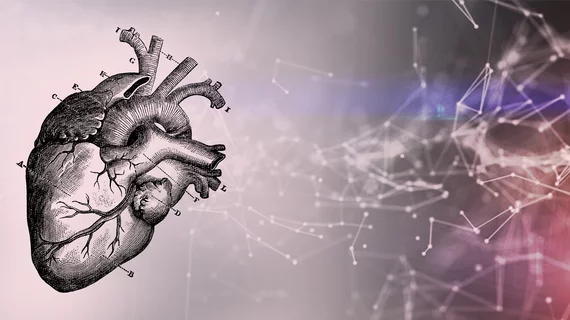MRI detects heart failure risk in patients with dilated cardiomyopathy
Magnetic resonance imaging (MRI) can predict which patients with a weakened heart muscle are more likely to suffer a major cardiac event, according to research published in Circulation: Cardiovascular Imaging.
University of Calgary clinicians made this discovery after studying 1,672 individuals who underwent a scan for dilated cardiomyopathy at one of 12 different institutions. About 40% of people had scarring patterns on their heart muscle visible on MRI.
The presence of late gadolinium enhancement in these patients was associated with a greater risk of experiencing future heart failure, life-threatening heart rhythms and death, according to study lead James White, MD.
"We have tended to think of dilated cardiomyopathy as one type of heart disease and that all patients should respond the same way, but we are learning that it is a collection of disease states that affect each patient differently," White, a researcher at UCalgary’s School of Medicine, said Wednesday. "The purpose of our study was to see if we could find individual patient features that can help us prescribe life-saving therapies, such as the implantable cardioverter defibrillator."
For their study, which White et al. said is the largest ever to test MRI in patients with DCM, the group analyzed data from the Multimodal International Cardiovascular Outcomes Registry. It includes standardized cardiovascular disease data from centers in Canada, the U.S., Spain and Italy.
The current lack of understanding of what causes DCM and why patients respond differently to treatments makes it difficult to treat these individuals, White noted. And the results of this study can inform future trials examining if higher-risk patients benefit from more intensive treatment.
"We can have a much greater impact on patient care and on clinical practice in general when we work together," he added. "The true benefit of initiatives like this is our ability to test innovative ideas quickly and show they can work in different healthcare systems and patient populations.”
Related Cardiomyopathy Content:
U.S. expected to see large rise in cardiomyopathy cases over next decade
FDA approves mavacamten for obstructive hypertrophic cardiomyopathy
Metoprolol demonstrates value as a treatment for obstructive hypertrophic cardiomyopathy
Diabetes with cardiomyopathy associated with heightened heart failure risk
‘Surprising’ trends in ICD use among HCM patients
Combined genetic testing for cardiomyopathies and arrhythmias yields positive results
COVID-19 leads to sharp rise in stress cardiomyopathy
LAA occlusion reduces stroke risk among patients with HCM and AFib

